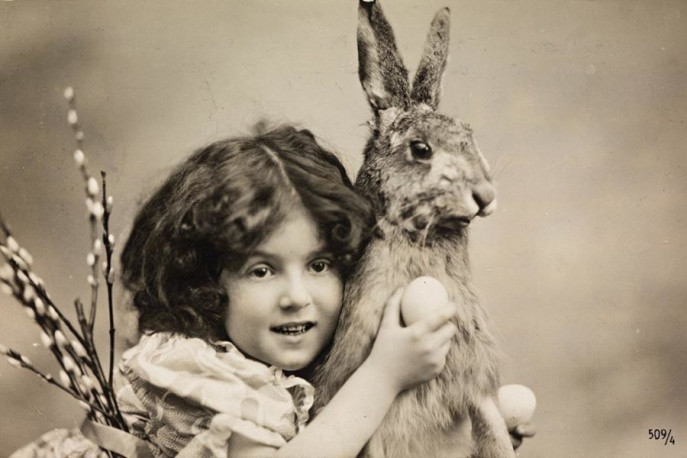
by: Ellen C. Caldwell
for JSTOR Daily
It’s time for colorfully dyed eggs, chocolate rabbits, Peeps, and, of course, the Easter Bunny. The origins of this curious rabbit who sneaks in and out of yards and houses to deposit baskets full of real, plastic, or chocolate eggs, is said to be in Germany. As Lillah Farmer describes it in her analysis of rabbits in children’s literature, “during a famine a poor woman dyed some eggs as gifts for her children at Easter. Just as they found them, a rabbit hopped away, leaving the belief that the rabbit had left the eggs.”
Of course, the Easter Bunny isn’t our only leporine hero. There is a general fascination with hares, bunnies, and rabbits in children’s literature and other aspects of popular and folk culture around the world. Lillah Farmer explores some of the compelling aspects of these mammals, which are “the most common animal in the world. They live on every continent except one and are very prolific.” Because of this prolific fertility, rabbits have become symbols of birth and the start of life. This is one reason the German bunny might have stuck as a symbol of Easter, as the animals already symbolized abundance and newness of life in springtime.
In Rodney Crisp’s creative introduction to his scientific tracing of the arrival and spread of non-native rabbits in Australia, he argues: “Pets or pests, rabbits hold a special place in the hearts and minds of children and adults alike in most western civilizations. Despite his 70 years of age, Bugs Bunny is still the favourite, followed by the Easter Bunny, the White Rabbit and the March Hare of Alice in Wonderland and then Beatrix Potter’s Peter Rabbit.” In addition to these western examples, Crisp notes that people carry rabbit feet for good luck; there are rabbit gods in Aztec mythology; rabbits are the fourth sign of the Chinese zodiac; and there is a Japanese myth that rabbits live on the Moon making mochi. Farmer adds that in ancient Egypt, rabbits also symbolized birth and new life…
